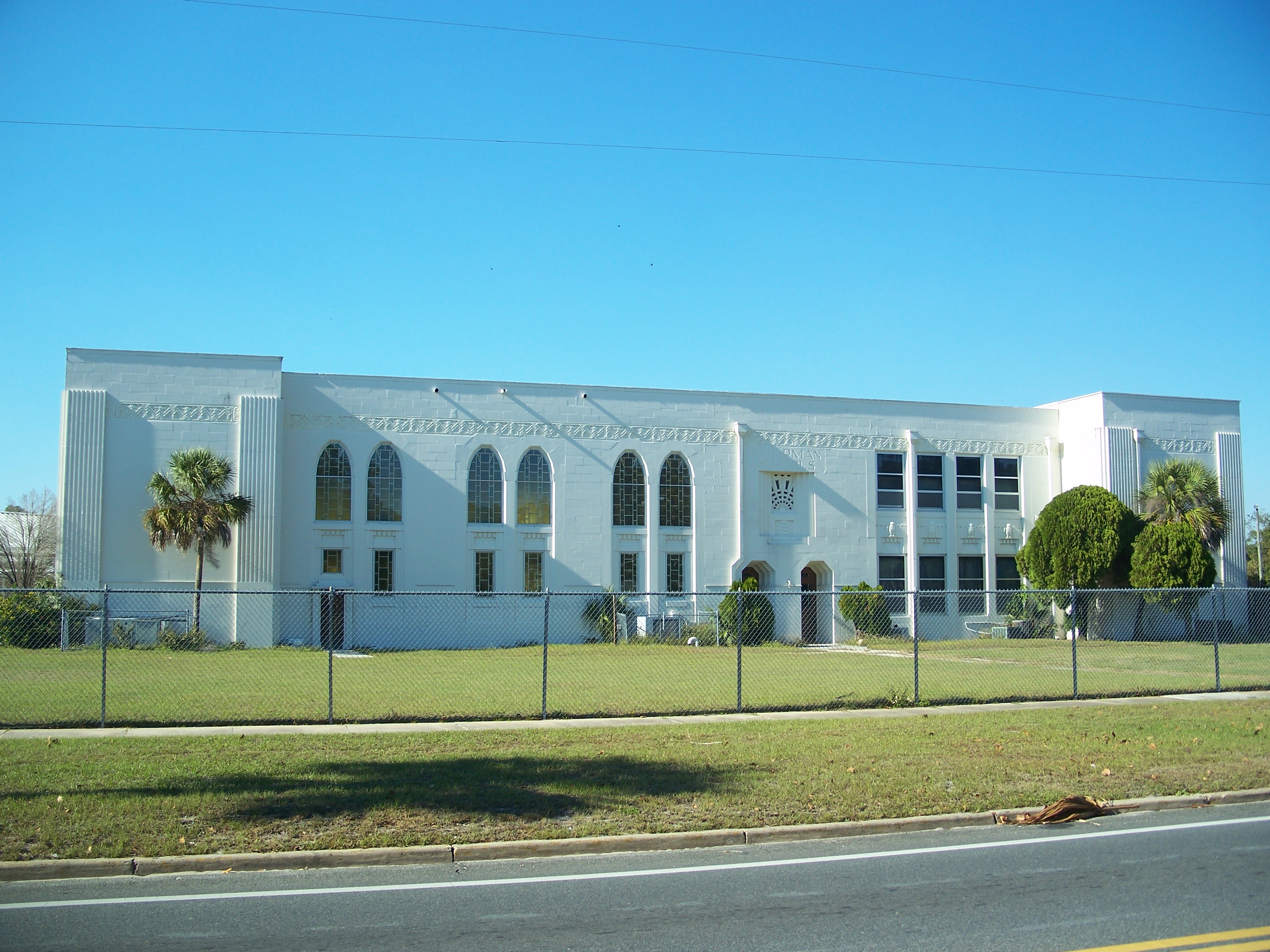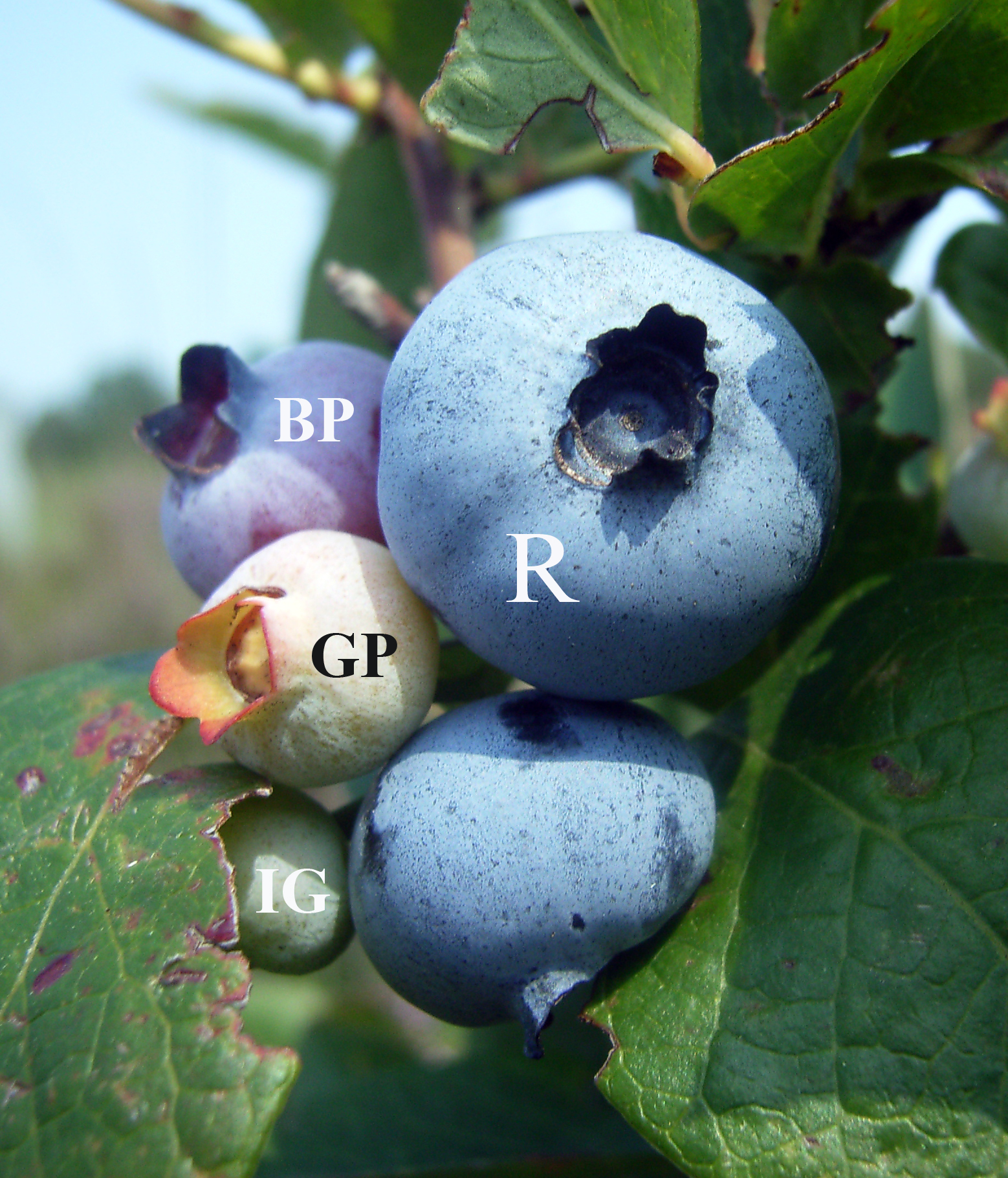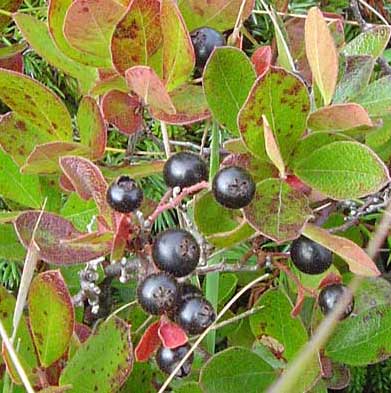|
Vaccinium Elliottii
''Vaccinium elliottii'' (Elliott's blueberry) is a species of ''Vaccinium'' in the blueberry group (''Vaccinium'' sect. ''Cyanococcus''). It is native to the southeastern and south-central United States, from southeastern Virginia south to Florida, and west to Arkansas and Texas. Growth ''Vaccinium elliottii'' is a deciduous shrub tall, with small, simple ovoid-acute leaves long with a finely serrated margin. The flowers are pale pink, bell-shaped, 6–8 mm long, opening in the early spring before the new leaves appear. The fruit is an edible berry 5–8 mm diameter. There are two variants one having tart shiny blue black berries and the other sweeter type having a whitish waxy bloom over the otherwise blue black berries; they ripen from late spring (in Florida) through summer (in Arkansas and Virginia). Cultivation and uses ''Vaccinium elliottii'' produces a particularly large yield of somewhat sour berries. It is popular for late-season fruit. Gallery Image:V ... [...More Info...] [...Related Items...] OR: [Wikipedia] [Google] [Baidu] |
Alvan Wentworth Chapman
Alvan Wentworth Chapman (September 28, 1809 – April 6, 1899) was an American physician and pioneering botanist in the study of flora of the American Southeast.Makers of American Botany, Harry Baker Humphrey, Ronald Press Company, Library of Congress Card Number 61-18435 He wrote ''Flora of the Southern United States'', the first comprehensive description of US plants in any region beyond the northeastern states. Education He was born in Southampton, Massachusetts, the youngest of five children. In 1830, he graduated from Amherst College with a degree in classics. He moved to Georgia and then Florida where he held various teaching positions, and married Mary Ann Hancock in 1839. In the early 1840s, he received a medical education, acquiring his MD in 1846. In 1847, he settled in Apalachicola, Florida, remaining there for the rest of his life working as a physician and botanist, collaborating with Asa Gray. Botanical works His botanical interest seems to have started when he liv ... [...More Info...] [...Related Items...] OR: [Wikipedia] [Google] [Baidu] |
Leaf
A leaf ( : leaves) is any of the principal appendages of a vascular plant stem, usually borne laterally aboveground and specialized for photosynthesis. Leaves are collectively called foliage, as in "autumn foliage", while the leaves, stem, flower, and fruit collectively form the shoot system. In most leaves, the primary photosynthetic tissue is the palisade mesophyll and is located on the upper side of the blade or lamina of the leaf but in some species, including the mature foliage of ''Eucalyptus'', palisade mesophyll is present on both sides and the leaves are said to be isobilateral. Most leaves are flattened and have distinct upper (adaxial) and lower ( abaxial) surfaces that differ in color, hairiness, the number of stomata (pores that intake and output gases), the amount and structure of epicuticular wax and other features. Leaves are mostly green in color due to the presence of a compound called chlorophyll that is essential for photosynthesis as it absorbs light ... [...More Info...] [...Related Items...] OR: [Wikipedia] [Google] [Baidu] |
Flora Of The Appalachian Mountains
Flora is all the plant life present in a particular region or time, generally the naturally occurring (indigenous) native plants. Sometimes bacteria and fungi are also referred to as flora, as in the terms ''gut flora'' or '' skin flora''. Etymology The word "flora" comes from the Latin name of Flora, the goddess of plants, flowers, and fertility in Roman mythology. The technical term "flora" is then derived from a metonymy of this goddess at the end of the sixteenth century. It was first used in poetry to denote the natural vegetation of an area, but soon also assumed the meaning of a work cataloguing such vegetation. Moreover, "Flora" was used to refer to the flowers of an artificial garden in the seventeenth century. The distinction between vegetation (the general appearance of a community) and flora (the taxonomic composition of a community) was first made by Jules Thurmann (1849). Prior to this, the two terms were used indiscriminately.Thurmann, J. (1849). ''Essai de Phy ... [...More Info...] [...Related Items...] OR: [Wikipedia] [Google] [Baidu] |
Flora Of The Southeastern United States
Flora is all the plant life present in a particular region or time, generally the naturally occurring (indigenous) native plants. Sometimes bacteria and fungi are also referred to as flora, as in the terms ''gut flora'' or '' skin flora''. Etymology The word "flora" comes from the Latin name of Flora, the goddess of plants, flowers, and fertility in Roman mythology. The technical term "flora" is then derived from a metonymy of this goddess at the end of the sixteenth century. It was first used in poetry to denote the natural vegetation of an area, but soon also assumed the meaning of a work cataloguing such vegetation. Moreover, "Flora" was used to refer to the flowers of an artificial garden in the seventeenth century. The distinction between vegetation (the general appearance of a community) and flora (the taxonomic composition of a community) was first made by Jules Thurmann (1849). Prior to this, the two terms were used indiscriminately.Thurmann, J. (1849). ''Essai de Phy ... [...More Info...] [...Related Items...] OR: [Wikipedia] [Google] [Baidu] |
Blueberries
Blueberries are a widely distributed and widespread group of perennial flowering plants with blue or purple berries. They are classified in the section ''Cyanococcus'' within the genus ''Vaccinium''. ''Vaccinium'' also includes cranberries, bilberries, huckleberries and Madeira blueberries. Commercial blueberries—both wild (lowbush) and cultivated (highbush)—are all native to North America. The highbush varieties were introduced into Europe during the 1930s. Blueberries are usually prostrate shrubs that can vary in size from to in height. In commercial production of blueberries, the species with small, pea-size berries growing on low-level bushes are known as "lowbush blueberries" (synonymous with "wild"), while the species with larger berries growing on taller, cultivated bushes are known as "highbush blueberries". Canada is the leading producer of lowbush blueberries, while the United States produces some 40% of the world supply of highbush blueberries. Origin and his ... [...More Info...] [...Related Items...] OR: [Wikipedia] [Google] [Baidu] |
Huckleberry
Huckleberry is a name used in North America for several plants in the family Ericaceae, in two closely related genera: ''Vaccinium'' and ''Gaylussacia''. The huckleberry is the state fruit of Idaho. Nomenclature The name 'huckleberry' is a North American variation of the English dialectal name variously called 'hurtleberry' or 'whortleberry' () for the Vaccinium myrtillus, bilberry. In North America the name was applied to numerous plant variations all bearing small berries with colors that may be red, blue or black. It is the common name for various ''Gaylussacia'' species, and some ''Vaccinium'' species, such as ''Vaccinium parvifolium'', the ''red huckleberry'', and is also applied to other ''Vaccinium'' species which may also be called blueberry, blueberries depending upon local custom, as in New England and parts of Appalachia. Taxonomy ''Gaylussacia'' Four species of huckleberries in the genus ''Gaylussacia'' are common in eastern North America, especially Gaylussacia b ... [...More Info...] [...Related Items...] OR: [Wikipedia] [Google] [Baidu] |
Berry (botany)
In botany, a berry is a fleshy fruit without a stone (pit) produced from a single flower containing one ovary. Berries so defined include grapes, currants, and tomatoes, as well as cucumbers, eggplants (aubergines) and bananas, but exclude certain fruits that meet the culinary definition of berries, such as strawberries and raspberries. The berry is the most common type of fleshy fruit in which the entire outer layer of the ovary wall ripens into a potentially edible "pericarp". Berries may be formed from one or more carpels from the same flower (i.e. from a simple or a compound ovary). The seeds are usually embedded in the fleshy interior of the ovary, but there are some non-fleshy exceptions, such as peppers, with air rather than pulp around their seeds. Many berries are edible, but others, such as the fruits of the potato and the deadly nightshade, are poisonous to humans. A plant that bears berries is said to be bacciferous or baccate (a fruit that resembles a ber ... [...More Info...] [...Related Items...] OR: [Wikipedia] [Google] [Baidu] |
Fruit
In botany, a fruit is the seed-bearing structure in flowering plants that is formed from the ovary after flowering. Fruits are the means by which flowering plants (also known as angiosperms) disseminate their seeds. Edible fruits in particular have long propagated using the movements of humans and animals in a symbiotic relationship that is the means for seed dispersal for the one group and nutrition for the other; in fact, humans and many animals have become dependent on fruits as a source of food. Consequently, fruits account for a substantial fraction of the world's agricultural output, and some (such as the apple and the pomegranate) have acquired extensive cultural and symbolic meanings. In common language usage, "fruit" normally means the seed-associated fleshy structures (or produce) of plants that typically are sweet or sour and edible in the raw state, such as apples, bananas, grapes, lemons, oranges, and strawberries. In botanical usage, the term "fruit" also i ... [...More Info...] [...Related Items...] OR: [Wikipedia] [Google] [Baidu] |
Flower
A flower, sometimes known as a bloom or blossom, is the reproductive structure found in flowering plants (plants of the division Angiospermae). The biological function of a flower is to facilitate reproduction, usually by providing a mechanism for the union of sperm with eggs. Flowers may facilitate outcrossing (fusion of sperm and eggs from different individuals in a population) resulting from cross-pollination or allow selfing (fusion of sperm and egg from the same flower) when self-pollination occurs. There are two types of pollination: self-pollination and cross-pollination. Self-pollination occurs when the pollen from the anther is deposited on the stigma of the same flower, or another flower on the same plant. Cross-pollination is when pollen is transferred from the anther of one flower to the stigma of another flower on a different individual of the same species. Self-pollination happens in flowers where the stamen and carpel mature at the same time, and are positi ... [...More Info...] [...Related Items...] OR: [Wikipedia] [Google] [Baidu] |
Shrub
A shrub (often also called a bush) is a small-to-medium-sized perennial woody plant. Unlike herbaceous plants, shrubs have persistent woody stems above the ground. Shrubs can be either deciduous or evergreen. They are distinguished from trees by their multiple stems and shorter height, less than tall. Small shrubs, less than 2 m (6.6 ft) tall are sometimes termed as subshrubs. Many botanical groups have species that are shrubs, and others that are trees and herbaceous plants instead. Some definitions state that a shrub is less than and a tree is over 6 m. Others use as the cut-off point for classification. Many species of tree may not reach this mature height because of hostile less than ideal growing conditions, and resemble a shrub-sized plant. However, such species have the potential to grow taller under the ideal growing conditions for that plant. In terms of longevity, most shrubs fit in a class between perennials and trees; some may only last about five y ... [...More Info...] [...Related Items...] OR: [Wikipedia] [Google] [Baidu] |
Vaccinium
''Vaccinium'' is a common and widespread genus of shrubs or dwarf shrubs in the heath family (Ericaceae). The fruits of many species are eaten by humans and some are of commercial importance, including the cranberry, blueberry, bilberry (whortleberry), lingonberry (cowberry), and huckleberry. Like many other ericaceous plants, they are generally restricted to acidic soils. Description The plant structure varies between species: some trail along the ground, some are dwarf shrubs, and some are larger shrubs perhaps tall. Some tropical species are epiphytic. Stems are usually woody. Flowers are epigynous with fused petals, and have long styles that protrude from their bell-shaped corollas. Stamens have anthers with extended tube-like structures called "awns" through which pollen falls when mature. Inflorescences can be axillary or terminal. The fruit develops from an inferior ovary, and is a four- or five-parted berry; it is usually brightly coloured, often being red or bluish wi ... [...More Info...] [...Related Items...] OR: [Wikipedia] [Google] [Baidu] |
Deciduous
In the fields of horticulture and Botany, the term ''deciduous'' () means "falling off at maturity" and "tending to fall off", in reference to trees and shrubs that seasonally shed leaves, usually in the autumn; to the shedding of petals, after flowering; and to the shedding of ripe fruit. The antonym of ''deciduous'' in the botanical sense is evergreen. Generally, the term "deciduous" means "the dropping of a part that is no longer needed or useful" and the "falling away after its purpose is finished". In plants, it is the result of natural processes. "Deciduous" has a similar meaning when referring to animal parts, such as deciduous antlers in deer, deciduous teeth (baby teeth) in some mammals (including humans); or decidua, the uterine lining that sheds off after birth. Botany In botany and horticulture, deciduous plants, including trees, shrubs and herbaceous perennials, are those that lose all of their leaves for part of the year. This process is called abscissio ... [...More Info...] [...Related Items...] OR: [Wikipedia] [Google] [Baidu] |

.png)






